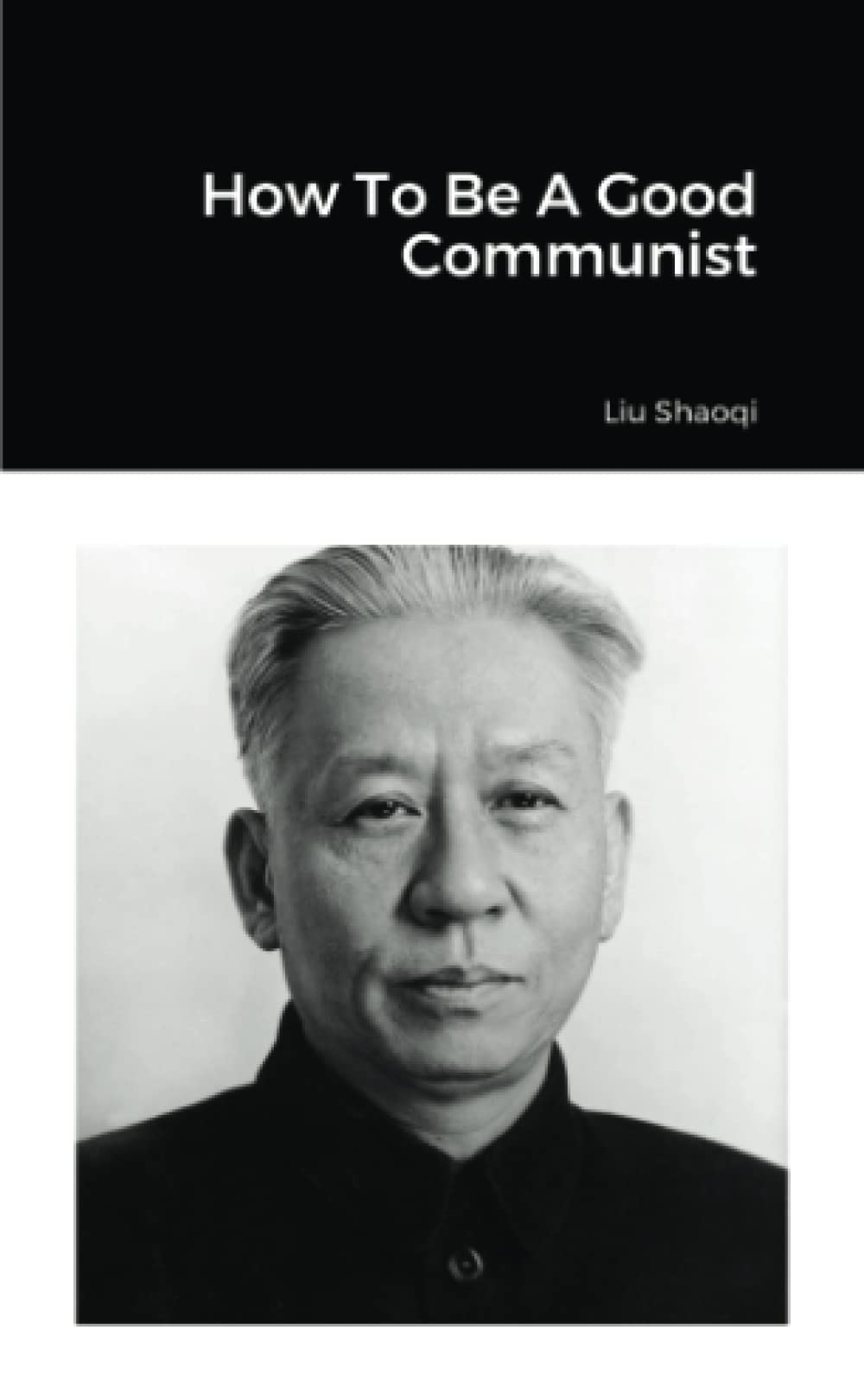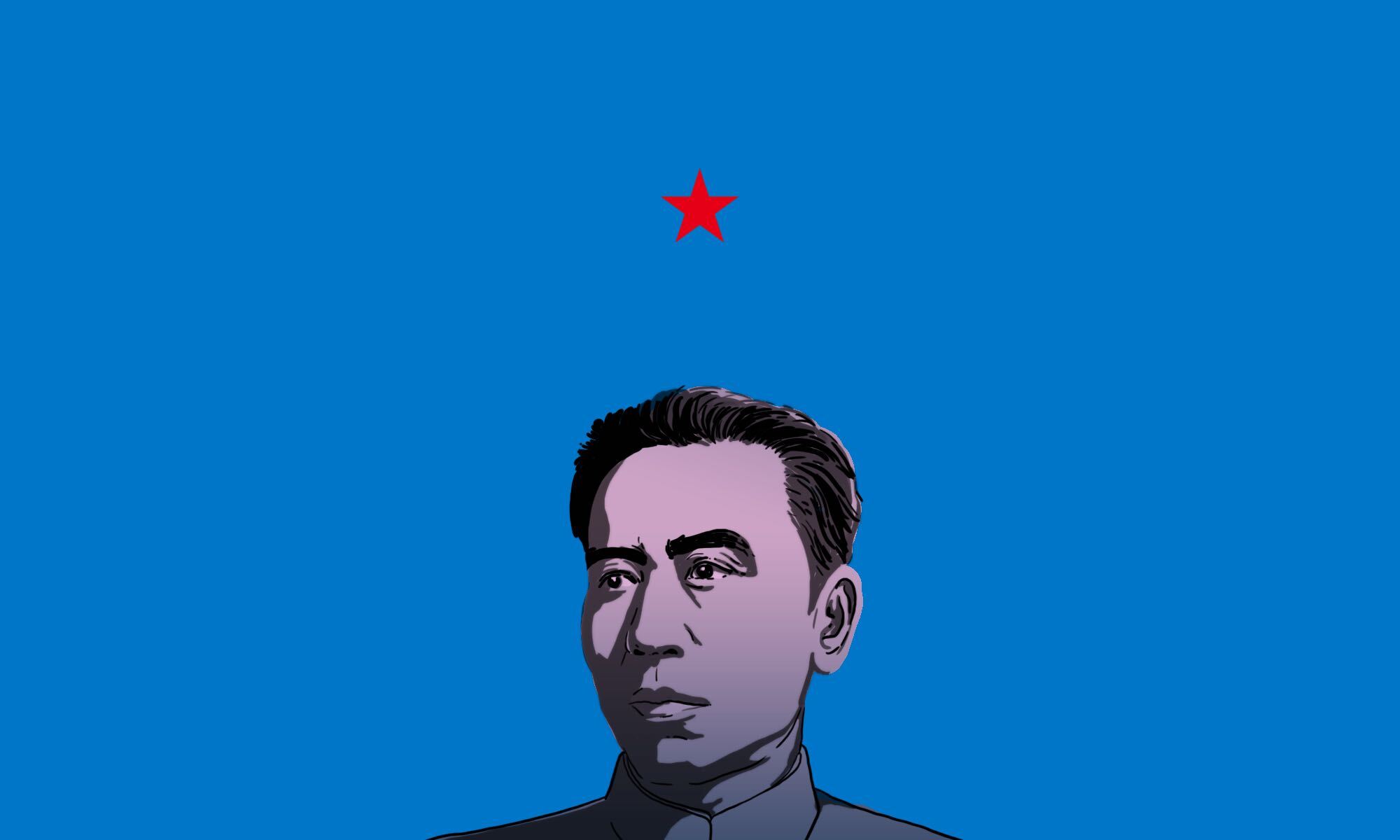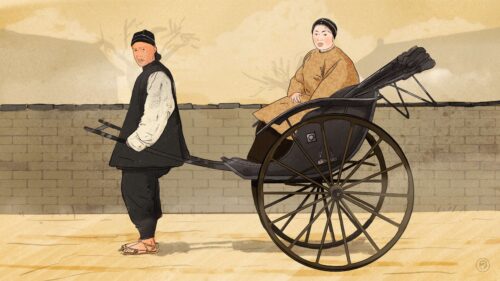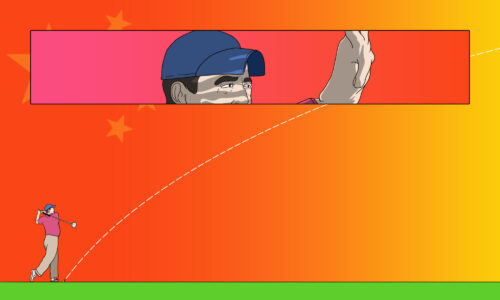This is book No. 17 in Paul French’s Ultimate China Bookshelf.

Blurbs:
“Entitled How to Be a Good Communist, this report, the first of Liu’s to have been preserved, reveals him as an astute student of human nature and a stern moralist in setting standards maintained by Communist Party members.”
—Howard L Boorman, The China Quarterly
“Any appraisal of the Cultural Revolution in China necessitates a reading of Liu Shaoqi’s How to Be a Good Communist.”
—SJ Noumoff, Pacific Affairs
About the author:
Liú Shǎoqí 刘少奇 (1898-1969) was born in Hunan province. In 1920 he joined the Chinese Socialist Youth Corps, then in 1921, its founding year, the Chinese Communist Party. He subsequently studied in Moscow at the Communist International’s (Comintern) University of the Toilers of the East. He returned to China to head the All-China Labor Syndicate and lead several railway worker strikes. He spent time in Guangzhou during the strikes and then Shanghai after the tragic May 30th Incident. He was first elected to the Party’s Central Committee in 1927. In 1932 he left Shanghai to join the Jiangxi Soviet. He participated in the Long March and was based at Yan’an during the Second Sino-Japanese War.
Liu held multiple high-level posts before his downfall in 1966. During the Great Leap Forward (1958-1962) Liu was supportive of Mao, which raised his influence and effectively made him the anointed successor. But Mao came to distrust Liu, denouncing him (and Dèng Xiǎopíng 邓小平) as “capitalist roaders” and, fatally, a “traitor” and an enemy agent. At the start of the Cultural Revolution, Liu was vilified, arrested, and disappeared from view. He eventually died of untreated pneumonia.
Liu was eventually rehabilitated in 1980. In 2018, Xí Jìnpíng 习近平 gave a speech commemorating the 120th anniversary of Liu’s birth.
The book in 150 words:
Liu Shaoqi was a major theoretician of the Chinese Communist Party. How to Be a Good Communist is excerpted from several 1939 speeches given at the wartime communist base of Yan’an and the rapidly established Institute of Marxism-Leninism. In his speech, Liu outlined the attributes of a good Party member to the youth, cadres, and party members. He expanded on Mao’s views on the unity of political theory and revolutionary practice. For decades, it was required reading for all Party cadres on discipline and individual self-cultivation. More than 20 million copies have been printed and distributed in 80 countries.
Your free takeaways:
“We Communists are the most advanced revolutionaries in modern history; today the changing of society and the world rests upon us and we are the driving force in this change. It is by unremitting struggle against counter-revolutionaries that we Communists change society and the world, and at the same time ourselves.”
“What is our most fundamental duty as Party members? It is to achieve communism. As far as the Communist Parties of different countries are concerned, in each country it is for the Communist Party and the people there to transform it by their own efforts, and in that way the whole world will be transformed step by step into a communist world. Will the communist world be good? We all know it will be.”
“The test of a Party member’s loyalty to the Party, the revolution, the cause of communism is whether or not he can subordinate his personal interests absolutely and unconditionally to the interests of the Party, whatever the circumstances.”
“Do not take a liberalistic attitude or flinch from any necessary inner-Party struggle. Carry on an irreconcilable struggle in the Party against ideas and views which are wrong in principle and against all other undesirable phenomena, so that we can constantly move to overcome them; they should never be allowed to develop unchecked to the detriment of the Party and the revolution.”
Why this book should be on your China bookshelf:
Liu Shaoqi is perhaps the one senior Chinese communist theorist more often mentioned overseas than back home in China. Naturally, this is partly due to his falling out with Mao and subsequent persecution and eventual death. But it is also in part because Liu was a Marxist-Leninist, one with Moscow training, and as China moved toward more indigenous homegrown variants of Marxism — the Maoism of the Cultural Revolution period, later variants of Dengism, Jiāng Zémín’s 江泽民 Three Represents Harmonious Society (see book No. 3, The Era of Jiang Zemin), and now Xi Jinping Thought — those theoreticians more closely aligned to classical (read: Soviet) Marxism-Leninism have been downgraded.
Yet, Liu Shaoqi is often still part of many Communist Party and Marxist-Leninist group study programs alongside Marx-Engels, Lenin, and Stalin. Within the Marxist canon, Liu Shaoqi’s thoughts represented a variant from Maoism, perhaps more resembling the theories of transition popularized by Nikolai Bukharin and Lenin in Russia (what some might call “state capitalism”), that as long as the major industries were in the hands of the proletariat, the existence of a limited market economy and the retention of private ownership would not hinder a nation’s progress toward socialism. This was problematic — both in the USSR (hence the early purging of Bukharin) and in China.
Still, Liu’s How to Be a Good Communist was more acceptable for longer, as the Maoist party remained Stalinist in its organization and compatible with Liu’s Moscow-learnt Marxist-Leninist techniques. And despite his erratic Party career and ultimate sad end, Liu is still discussed (or at least was in the late 1990s and into the earlier 2000s, if not necessarily today). Professor Zhang Jinrong of Central South University in Changsha has argued that Liu’s ideology on Party organization is developed from, and a development of, Confucianism. This was a fairly popular line around the turn of the century, coinciding with the various campaigns to “modernize” Confucianism throughout the Jiang Zemin and then the subsequent Hú Jǐntāo 胡锦涛 administrations. This is all less front-and-center currently and so rarely heard now.
But perhaps ultimately, while Liu’s How to Be a Good Communist was essential to an earlier phase of pre-1949 Party building and then helping to integrate a new legion of post-1949 cadres into the Marxist-Leninist organization, its day is done. Does the Chinese Communist Party, with its seemingly secure and locked-down grip on its cadres and the wider population, need Liu’s organizational guidelines today? Roderick MacFarquhar (the founding editor of the China Quarterly, among many other notable Sinological actions), in his The Origins of the Cultural Revolution (1974), thought Liu “grey in eminence,” the “least colorful” of the original 1949 CCP leadership team. Phillip Short, in his biography Mao: A Life (1999), wrote that “Liu was organization personified, a remote, intimidating man, with no real friends, no outside interests and little sense of humor, whose phenomenal energy was channeled in its entirety into the service of the party.”
So why add Liu to our Ultimate Bookshelf? Quite simply, he is emblematic of a time when the CCP thought seriously about its place within global Marxist-Leninist thought and ideology, when it was a truly revolutionary party — that is to say, a party that sought to practice, implement, and consolidate revolution. That is why Liu Shaoqi’s How to Be a Good Communist is still read in revolutionary parties around the world; that is also why Liu Shaoqi is rarely, if ever, read in China today.
Next time:
Before we move on from Maoism for the time being, let’s indulge once again in a lavish purchase for our Ultimate China Coffee Table: the artistic aesthetic of Maoism, of the Mao era, encompassing the Great Leap Forward and the Cultural Revolution. Once a way to guide the masses, ubiquitous on every street corner, school classroom, danwei office, not largely seen as kitsch; once dangerous, now harmless; once something to revere and respect, now something to cover a bright notebook — the Chinese propaganda poster.
Check out the other titles on Paul French’s Ultimate China Bookshelf.







